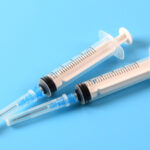A new study shows efficacy but the NIP leaves rheum in the cold.
A Swedish study investigating Shingrix immunogenicity in rheumatoid arthritis patients taking JAK inhibitors has reported that four in five patients achieved an adequate antibody response.
With Shingrix now free for eligible patients under the National Immunisation Program, these findings can help reassure rheumatologists with patients on JAK inhibitors.
However, at this stage ‘eligible patients’ doesn’t extend to those aged 18-64 experiencing immunocompromise due to use of immunosuppressants used in rheumatology, including anti-TNF inhibitors, rituximab, abatacept and mycophenolate, as well as JAK inhibitors.
Yet ATAGI includes people taking these common DMARDs among those contraindicated for the Zostavax live vaccine, leaving those patients who are under 65 unprotected against herpes zoster – or footing the $500+ bill for a non-subsidised Shingrix prescription.
In a letter to membership, the Australian Rheumatology Association has advised that it has approached PBAC proposing expanded eligibility for rheumatology patients taking medications likely to leave them immunocompromised and at risk of herpes zoster infection.
Meanwhile, with few studies looking at Shingrix in rheumatic disease patients, this recent study provides welcome support for recommendations to use the non-live vaccine in this vulnerable patient group.
“In this non-randomized clinical trial, we found that most patients with RA treated with JAKi responded to vaccination with the HZ/su vaccine with increased gE-specific antibody levels,” wrote the authors in Rheumatology.
“However, the antibody response was generally lower in patients than controls. Treatment with JAKi in combination with MTX was associated with a weaker antibody response compared with JAKi monotherapy.
“Based on self-reported [adverse events], the vaccine safety profile was acceptable in this population and there were low rates of increased RA disease activity following vaccination.”
The prospective trial included 82 rheumatoid arthritis patients being treated with JAK inhibitors – mostly baricitinib (74%), with upadacitinib (17%) and tofacitinib (9%) also represented – and 51 healthy controls.
Doses were given two months apart, with blood samples collected before the first dose and six weeks after the second dose.
Just over 80% of RA patients and 98% of controls achieved a ≥4-fold increase in anti-gE antibody levels, considered a satisfactory antibody response. However, average antibody levels in RA patients were about half that of controls, with an average 13-fold increase for patients versus an average 23-fold increase for controls.
Antibody levels were significantly lower among patients taking JAKi plus methotrexate compared with patients taking JAKi monotherapy, but other potential predictors of vaccine response, including age, sex, comorbidities, use of glucocorticoids, disease activity and previous shingles infection, had no effect.
Almost all patients in both groups reported adverse events, mostly injection site reactions, fever and headaches. RA patients were more likely to report arthralgias, and six had increased RA disease activity.
Two RA patients experienced herpes zoster infections – one a few days after the first vaccine and the other about 10 weeks after the second dose. Both paused JAKi therapy and were given antiviral treatment and recovered completely.
The authors suggested that pausing JAKi and/or methotrexate around the time of vaccination may improve immunogenicity, although pointed out most people had a good response regardless and pausing treatment may worsen disease activity.
“These results support recommendations for using the HZ/su vaccine for immunization against HZ in this vulnerable population,” they concluded.



